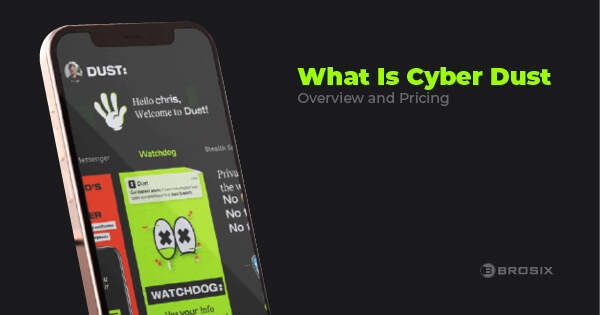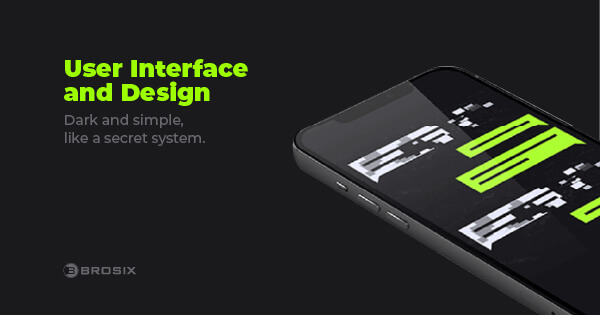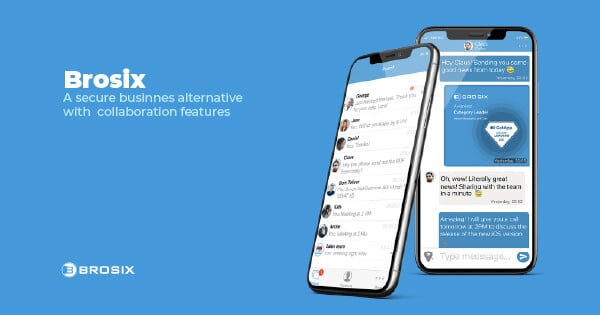How safe are your private messages?
Once you’ve sent a message from your phone and it’s no longer in your control, who has access to it and where is it stored?
Different messaging apps answer this question in different ways. Some use end-to-end encryption to make sure no one—even the app owners—has access to your messages’ content. Others have special features that allow you to send disappearing messages, create secret chats, and hide your identity.
Some apps, like Telegram, mix all these and allow for end-to-end encryption in some cases while also giving you a set of features to make your data more secure.
Dust app (also known as Cyber Dust) takes a firm stance when it comes to security: everything is secure at all times and nothing is stored anywhere. As you might assume, this makes the messaging experience pretty secure but it sacrifices a lot of the app’s usability.
So, let’s make a Cyber Dust review and see how it works.
What Is Cyber Dust: Overview and Pricing?

Self-branded as “the world’s most secure messenger”, Dust is a free instant messaging app that puts safety over everything else. Literally over everything else: you can’t take screenshots, save images, or access previous conversations. All these things are sacrificed to make the messages’ content more secure.
The app is the brainchild of Mark Cuban, who himself had an unpleasant encounter with the SEC during which he had to sit and listen while the messages he believed to be private were broadcast to everyone.
Dust avoids this issue by deleting all messages, read and unread, from both devices.
Installation and Setup
Downloading, installing, and signing up for Dust takes only a few moments. Surprisingly, the app requires your phone number to create a profile, which is something that can’t be said for some other secure apps: Threema and Telegram first come to mind.
Once you enter your number, you’ll get a 6-digit confirmation code—pretty standard procedure.
From there, Dust will allow you to connect to people from your contacts list that have the app installed. You can sync your contacts at the beginning or navigate to the Friends section later. However, this is one of the biggest issues with the Dust app: you’ll hardly find any Cyber Dust users among your contacts.
To bypass this issue, you can invite people to Dust via regular SMS. Navigate to Friends, click the “Invite” anchor text, and you’ll be taken to the Contacts list on your phone. You can also click on the person icon in the top right corner, or navigate to Chats and tap “Invite”.
Select the contact (or contacts) you want to invite to Dust and tap “Done”. This will open your SMS app and upload a pre-created text message inviting the contact to install Dust by clicking a link.
Overall, Dust is fairly easy to set up and it’s neat that the creators recognize how connecting with people might be the most significant obstacle when using the app. That’s why you have an option to invite people to Dust on almost every screen, in almost every tab.
User Interface and Design

Dust’s user interface is dark and simple—it feels very much like a closed, secret system.
You can switch between a light and a dark mode and choose themes like Magenta, Azure, etc. Unfortunately, these themes only change details like button and icon color. So, for example, the Azure theme in dark mode will be 80% black with blue buttons and icons. Switching to a Magenta theme will only change the other 20% while the rest of the app will still be black.
This does provide a certain vibe of anonymity and secrecy but we still feel like more could have been done in the design department.
The app is organized into four main tabs: Friends, Chats, Blasts, and something that you could call Profile, although the app doesn’t have a name for this last tab.
The Friends and Chats tabs are fairly straightforward: Friends lists all the contacts you have in the app while the Chats is a screen with all your conversations. The Blasts tab is sort of a unique feature to Dust.
Blasts are essentially broadcast messages that you can send to your followers. Think of them as group messages that are received and read privately. It’s like a Twitter that is internal to the Dust app. It serves the same purpose as Channels on Telegram or Servers on Discord: to let you connect to a wider audience and share your thoughts and ideas.
On the last screen—let’s call it Profile—you can see your followers and the people you follow, as well as all your Blasts. Here, you can also access your Settings by tapping on the icon in the top right corner. You can write a Bio or add an image but most of the other settings are less geared towards customization and more towards general information and policies.
Dust App Security
In the safety department, the Dust messaging app is almost unrivaled when compared to other secure instant messengers. If you compare it with Signal private messenger which is often lauded for its security and transparency, you’ll find that Dust achieves some important feats.
For example, Dust doesn’t store anything on its servers. From the moment you send the message until the moment your contact receives it, nothing gets stored. Not only that, but your contact can’t even save your messages or images in any way.
We can say that Dust’s Unique Selling Proposition is that all content is deleted after 100 seconds (once read) or 24 hours (if left unread).
That can be an issue because, in regular messaging, you’ll often want to come back to a conversation for various reasons. You can’t do this in Dust, nor can you take a screenshot on Android. On iOS, you can take a screenshot but it instantly notifies the other person.
These are perfect examples of how a laser focus on safety turns Dust into a niche app that just isn’t usable as a go-to encrypted chat app.
Cyber Dust User Reviews
There are lots of Cyber Dust reviews online, most of which praise the app for its handling of data privacy with disappearing messages and end-to-end encryption. Most users agree that the app is one of the safest options out there, even compared to other secure messengers that occupy the same space.
Most of the criticism is focused on the lack of features. Video calls, recording voice messages, and uploading large files are all pain points that users have issues with. A lot of users aren’t loving the color schemes and find them too simplistic and limiting.
However, certain users understand that security comes at a price and are willing to give up some features if data safety can be guaranteed. One particular Dust review praises it for allowing users to delete any message at any time.
The app currently has a 4.6 rating on the App Store and a 4.1-star rating on the Google Play Store.
Frequently Asked Questions About Dust

Now, here are some questions that have been puzzling users and potential users of the Dust app.
What is Cyber Dust used for?
The lack of features and a strong focus on safety might make you ask yourself which users the creators of the app had in mind when creating this app.
The obvious answer is anyone who cares deeply about secure communication. You can use Dust to message groups and individuals just like with any other app, only with certain limitations. In general, Dust is perfect for sharing any kind of sensitive information.
On their website, you’ll find certain situations mentioned as great use cases for the app:
- Talking with colleagues without fear of being monitored by the company;
- Sending sensitive information like your social security number without fear of identity theft;
- Sharing NSFW content without risking your private photos being made public.
Does Dust have video calls?
No. In fact, Dust doesn’t have voice or video calls. It also doesn’t allow recording and sending voice messages, unlike many other messenger apps. It’s unclear whether Dust plans to introduce these features any time soon but don’t get your hopes up.
The objective of the app isn’t to provide an immersive, effortless communication experience but to ensure maximum security.
How do you create a Group chat on Dust?
To create a group chat, navigate to the Chats tab and tap the Compose icon in the top right corner.
A search bar will open up, allowing you to enter your contacts’ names and start a conversation. Select multiple contacts to create a group chat and tap “Next”. Give the group a name and you’re done!
Pros and Cons
Putting all of this together, here are the key advantages and shortcomings of the Dust app.
The pros:
- Safe messaging: When talking about secure instant messengers, Dust should be right in the middle of this conversation. They don’t store anything on their servers, everything is end-to-end encrypted, and all messages disappear.
- Sharing sensitive material: Not only is all your data encrypted and unavailable to third parties but your contacts can’t take screenshots or share anything without your knowledge.
- Broadcasting messages: The “Bursts” feature is an interesting option that introduces a new social aspect to the app. You can have followers and share ideas, news, and more.
The cons:
- No advanced communication: You can’t make voice or video calls—this is a big knock against Dust since most free instant messengers have gone to great lengths to make these features available. Not to mention that Dust offers no collaboration tools like polls, screen sharing, and other similar options.
- No chat history: Not being able to access previous messages might provide more safety but it makes long-term conversations much harder.
- Low popularity: It can be important for messengers—even secure ones—to have a certain audience so that you don’t have to convince all your friends to install the app. Unfortunately, while Telegram, Signal, and some other safe messengers fit this criterion, Dust still hasn’t achieved anywhere near that level of popularity.
Brosix: Safety That Doesn’t Exclude Practicality

If you find that Dust sacrifices too much functionality to make the experience more secure, you might be looking for a different solution.
When we created Brosix, our main goal was to put these two things together: safety and functionality. As a result, you can efficiently communicate with friends and coworkers with no safety concerns!
An effortless messaging experience
With Brosix, you can send your messages to individuals or Chat rooms in an intuitive way, with no extra steps. You can also use voice chat and instant video chat if you want to communicate in other ways and avoid wasting time on endless messages.
Unlike the Dust app, Brosix has an unlimited chat history that you can search by keyword as well as a date. So you’ll always be on top of every conversation and never miss a thing.
But what about safety? Can Brosix match Dust here?
While your messages won’t be deleted after 24 hours, Brosix uses end-to-end encryption for all messages and uses all the latest, industry-leading security standards. You can rest assured that all of your data is safe from third-party access.
The Final Word
Ultimately, the Dust app is a niche messenger that can be useful if you’re sharing extremely sensitive data or if you have big safety concerns.
As for the messaging experience it provides, our Cyber Dust review shows the app is slightly underwhelming. It only allows you to communicate over text and the automatic deletion of messages, while safe, can produce its own problems in the long run.
If you find these things problematic, you might want to consider Brosix. It puts security and convenience together to provide a much more sustainable messaging solution that puts you in control.






